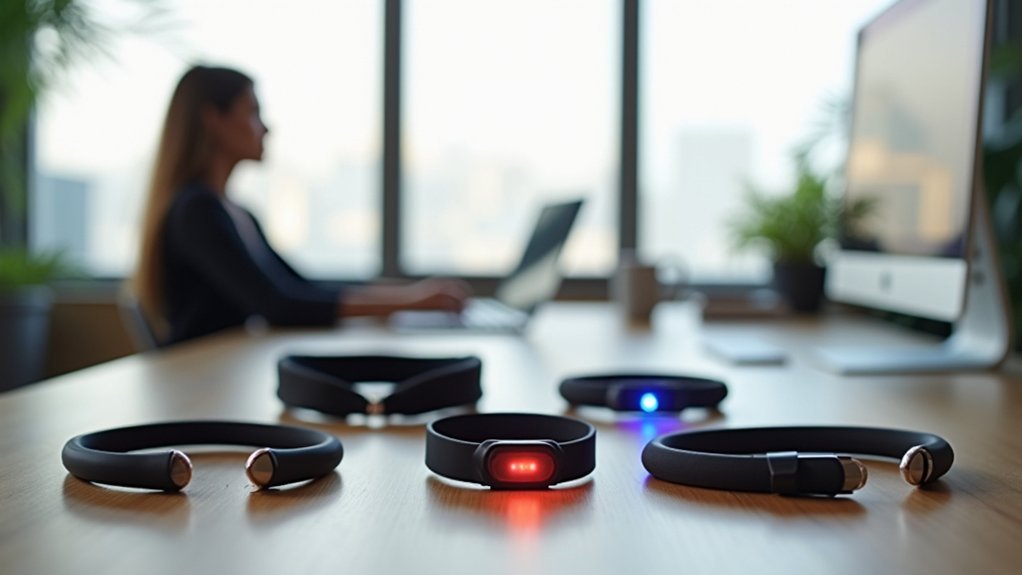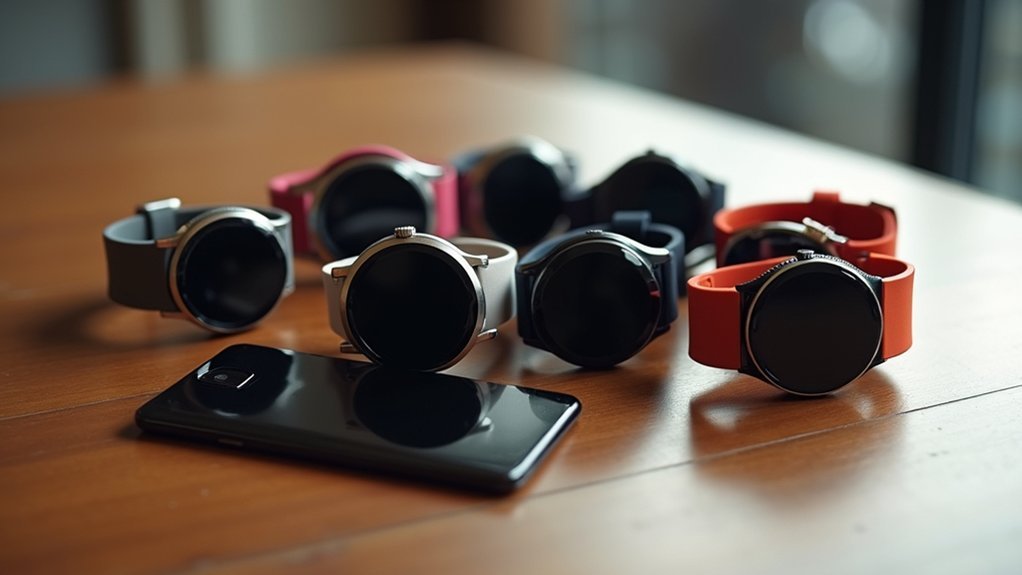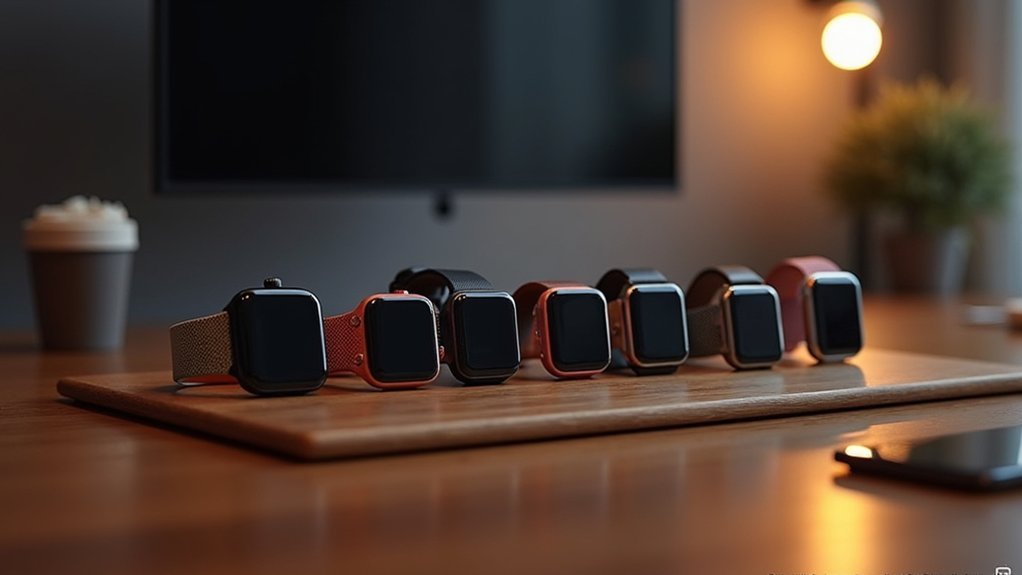Smart posture wearables can transform your posture habits through real-time feedback. Top options include Straight+ for upper back alignment, StrongArm for workplace safety, and Garmin Instinct 3 for fitness integration. These devices use accelerometers and gyroscopes to detect slouching, sending immediate alerts when you need to adjust. Users report up to 54% reduction in back pain with consistent use. Explore how these technology-driven solutions compare across price points and comfort features.
The Science Behind Posture Tracking Technology
While smartphones and watches track our steps and heart rates, posture wearables represent a fascinating evolution in health technology. These devices rely on sophisticated sensors—accelerometers, gyroscopes, and magnetometers—that continuously monitor your body’s orientation and movement patterns.
When you slouch or hunch, these sensors detect the deviation from ideal alignment. The magic happens through real-time data processing algorithms that transform complex sensor readings into actionable insights.
Many devices now incorporate machine learning models that recognize specific posture problems and suggest personalized corrections. The most effective wearables provide instant biofeedback through gentle vibrations or app notifications, helping you adjust in real-time. Some systems use innovative flex sensor technology that changes resistance as the user’s back bends, providing accurate measurements of spinal curvature.
Some advanced systems use ultrasonic or pressure-sensing technology to capture more nuanced posture metrics, while inertial sensors offer reliable tracking throughout your day.
Top 5 Smart Posture Wearables on the Market Today
Five innovative wearables are transforming how we monitor and improve our posture in 2023.
Straight+ offers continuous AI-powered feedback in a compact device worn on your upper back, syncing with your smartphone and Apple Watch.
StrongArm targets workplace safety by analyzing posture and movements to reduce injury risk in industrial settings.
SlateSafety BAND V2 combines biometric monitoring with posture alerts, operating hands-free for uninterrupted workflow.
Wearable X Nadi X Smart Yoga Pants use embedded sensors to deliver tactile vibration cues, enhancing your form during workouts.
Garmin Instinct 3 integrates posture alerts into its all-encompassing fitness tracking system, using solar technology for extended battery life. The latest model now includes Garmin Pay for contactless payments, adding convenience to its impressive feature set.
Each device offers unique approaches to posture correction while fitting seamlessly into your daily routine.
Real-World Applications: From Office to Workout

The versatility of smart posture wearables extends far beyond simple reminders to sit up straight. In office settings, these devices help prevent musculoskeletal disorders while boosting your productivity and reducing fatigue. As remote work becomes standard, they guarantee you maintain ergonomic practices wherever you’re based.
During workouts, posture wearables provide real-time feedback that enhances your performance and minimizes injury risk. They’re invaluable for rehabilitation, creating personalized training plans based on your specific needs.
The benefits aren’t just physical—proper posture can boost your confidence, reduce stress levels, and improve your mood. Studies involving over 57,000 users have demonstrated a remarkable 54% reduction in back pain through consistent use of posture correction devices.
The technology continues advancing, with AI analyzing your posture patterns and sophisticated sensors detecting subtle changes. Whether you’re at your desk or in the gym, these wearables help you maintain ideal form throughout your day.
Cost vs. Benefit Analysis of Posture Correction Devices
How much should you invest in your posture? Premium devices with smart sensors cost $150-$200+, while basic braces run under $50. Consider that poor posture contributes to the $60B annual economic burden of back pain in the U.S. alone. Electronic posture devices typically have limited evidence supporting their effectiveness, despite manufacturer claims.
| Device Type | Cost Range | Key Benefit |
|---|---|---|
| Premium Smart | $150-$200+ | Real-time feedback & tracking |
| Mid-Range | $80-$150 | Limited smart features |
| Basic Braces | $30-$50 | Simple physical correction |
| DIY Solutions | $15-$30 | Budget-friendly accessibility |
| App-Only | $0-$10 | No hardware required |
Be cautious—wearing braces for more than 1-2 hours daily risks muscle dependency. The global posture correction market is growing at 6.5% annually, but cost barriers remain in developing regions where financial constraints limit access to advanced technology.
User Experience and Long-Term Posture Improvement Results

Satisfaction with posture wearables hinges largely on their feedback mechanisms, with haptic vibrations proving most effective for discreet daily use. Real-time guidance consistently outperforms delayed feedback, allowing you to make immediate posture adjustments without workplace disruptions.
Long-term success depends on several factors:
Success with posture wearables requires comfort, data clarity, personalized feedback, and durability—essentials for long-term behavioral change.
- Comfort and attachment method – Adhesive options and necklace designs show higher compliance rates due to their ergonomic integration.
- Data visualization – App integration with platforms like Apple Watch increases engagement through meaningful metrics.
- Personalization capabilities – ML algorithms that distinguish between activities customize alerts for your specific needs.
- Durability factors – Devices withstanding 180K+ compression cycles eliminate frequent replacement concerns.
Clinical validation confirms these wearables accurately measure spinal posture, with rehabilitation adherence improving markedly when users receive live metrics. The new smart insole system offers exceptional durability benefits with no performance deterioration even after 180,000 cycles of regular use.
Frequently Asked Questions
Are Posture Wearables Safe for People With Electronic Medical Implants?
Posture wearables aren’t conclusively proven safe for you if you have electronic implants. You’ll need to consult your doctor, as limited research exists and manufacturer guidelines typically recommend keeping 2-4 inches distance from implants.
Can Children Use Smart Posture Wearables Safely?
Children can use smart posture wearables safely under professional guidance. You’ll want to choose devices specifically designed for kids, with proper sizing, adjustable features, and non-intrusive feedback. Medical conditions require healthcare provider supervision.
How Do Posture Devices Affect Clothing Choices and Professional Appearance?
You’ll need to select clothing that conceals posture devices for professional settings. Choose loose or tailored tops, stretchable fabrics, and darker colors to maintain your polished appearance while benefiting from posture correction.
Do Posture Wearables Work for Non-Traditional Seating Like Exercise Balls?
Yes, posture wearables do work with exercise balls. You’ll actually benefit from the complementary effects as the ball engages your core while the wearable monitors your alignment and provides real-time feedback for corrections.
Are There Waterproof Options for Swimmers or Water-Based Activities?
Yes, you’ll find several waterproof options for swimming. The FINIS Posture Trainer is specifically designed for all swim strokes, providing tactile feedback underwater. FORM Swim Goggles also track posture with in-lens display while swimming.
In Summary
You’ve seen the technology, compared the top devices, and examined their real-world impact. While posture wearables aren’t magic solutions, they’re valuable tools in your wellness arsenal. Whether you’re battling desk-job slouch or refining athletic form, the right device can deliver meaningful improvement. Consider your specific needs and budget—then take that first upright step toward better posture and reduced pain.





Leave a Reply